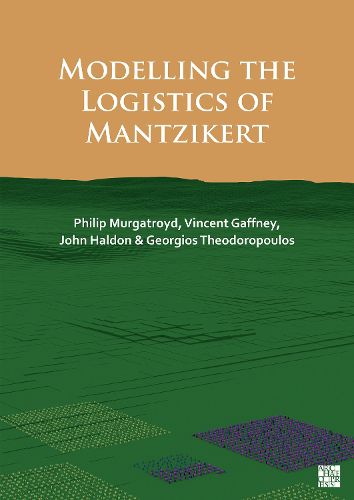Readings Newsletter
Become a Readings Member to make your shopping experience even easier.
Sign in or sign up for free!
You’re not far away from qualifying for FREE standard shipping within Australia
You’ve qualified for FREE standard shipping within Australia
The cart is loading…






In AD 1071, the Byzantine Emperor, Romanos IV Diogenes, set out from Constantinople for the eastern borders of his Empire with an army described as "more numerous than the sands of the sea". His military campaign culminated in defeat by the Seljuk Sultan Alp Arslan at the Battle of Mantzikert. This defeat was to have profound consequences for both Byzantine and Turkish history and is still commemorated in the modern state of Turkey. Yet the historical sources for this campaign contain significant gaps and we know more about the political intrigues surrounding the emperor than we do about how the army moved and fed itself. The 'Medieval Warfare on the Grid' project (2007-2011) was funded by an AHRC-EPSRC-Jisc e-Science grant and set out to use computer simulation to shed new light on the Mantzikert campaign. In this book we present the results of the project and demonstrate that computer simulation has an important role to play in the analysis of pre-modern military logistics. It can give new context to historical sources, present new options for the interpretation of past events and enable questions of greater complexity to be asked of historical military campaigns. It can also highlight the similarities that exist across time and space when armies need to be mobilised, moved and fed.
$9.00 standard shipping within Australia
FREE standard shipping within Australia for orders over $100.00
Express & International shipping calculated at checkout
In AD 1071, the Byzantine Emperor, Romanos IV Diogenes, set out from Constantinople for the eastern borders of his Empire with an army described as "more numerous than the sands of the sea". His military campaign culminated in defeat by the Seljuk Sultan Alp Arslan at the Battle of Mantzikert. This defeat was to have profound consequences for both Byzantine and Turkish history and is still commemorated in the modern state of Turkey. Yet the historical sources for this campaign contain significant gaps and we know more about the political intrigues surrounding the emperor than we do about how the army moved and fed itself. The 'Medieval Warfare on the Grid' project (2007-2011) was funded by an AHRC-EPSRC-Jisc e-Science grant and set out to use computer simulation to shed new light on the Mantzikert campaign. In this book we present the results of the project and demonstrate that computer simulation has an important role to play in the analysis of pre-modern military logistics. It can give new context to historical sources, present new options for the interpretation of past events and enable questions of greater complexity to be asked of historical military campaigns. It can also highlight the similarities that exist across time and space when armies need to be mobilised, moved and fed.